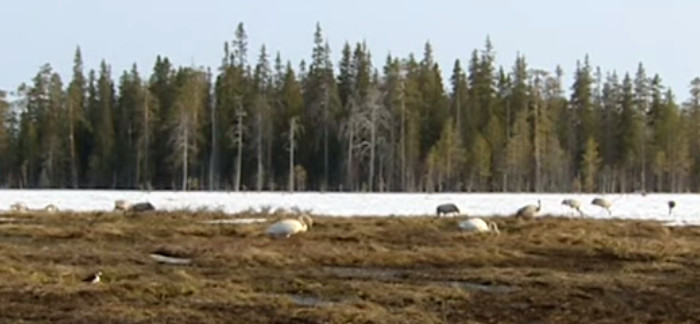The Taiga biome is the largest on the planet. It extends across North America, Asia, and Europe. Filled with coniferous forests, it usually has summers that are short and wet with winters that are fairly long and cold because of its northern location. Here are some important facts to know about the Taiga that you may not have known about this massive biome.
1. Call a Firefighter
Even though there is a moderate level of precipitation across the Taiga biome, wildfires are very common. These fires are part of the natural restorative process of the biome. The fires help the coniferous forests be able to get rid of the trees that are either sick, old, or already dead and creating clutter.
2. There’s No Variety
You won’t find many different kinds of plants in the Taiga. Almost all of the plants in this biome are conifer trees. This is often why many call the Taiga biome the world’s largest coniferous forest. These trees also contribute a large amount of the oxygen that we all breathe every day. Coniferous trees don’t lose their leaves in winter, which means the soil lacks a lot of nutrients and this also contributes to the lack of variety.
3. No One Lives There
#3. With the exceptions of Moscow and Toronto, most people don’t live in the Taiga. It’s an area of the planet that is largely uninhabited. This is because the winters can get very cold and freezing temperatures are experienced for up to 6 months every year. This limits the growing season to about 3 months, which also limits food options.
4. It’s Endangered
Logging in the Taiga is not like logging in more temperate climates. These trees have very short growing cycles each year, which means tree replacement can take two generations to complete. This is twice as long as in warmer biomes. Mining also robs the soil of the few nutrients that it does have available to those who live there.
5. Watch Out for Mosquitoes
There are not a lot of animals that call the Taiga home. Those that do tend to either hibernate during the cold winters or migrate toward warmer temperatures. This means that there are lots and lots of insects always buzzing around. Migrating birds, however, do help to take care of some of these bugs during the warmer months.
6. Covered in Ice
There have been multiple Ice Ages on the planet over its existence and many scientists believe that the Taiga has been regularly covered by glaciers. This is likely one reason why the animals of the Taiga are covered with thick fur and can adapt quickly to the icy conditions when they occur. Their ancestors had to adapt to survive.
The Taiga is a unique, thriving environment that we need to maintain the health of our planet. By knowing these facts, we can make sure that the Taiga continues to survive by being able to take care of it properly.




